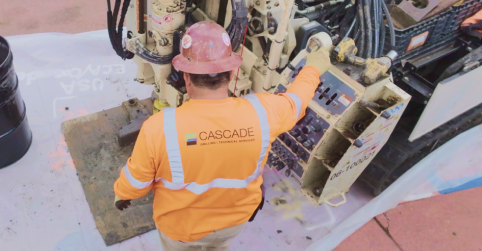How FMCSA compliance and scoring drive safer operations.
According to the Bureau of Labor Statistics, transportation incidents were the leading cause of workplace deaths in 2023. While that’s disheartening news for people who work in the transportation industry, there is a silver lining. The BLS statistics show that truck driver deaths dropped 11.9% in a year, underscoring the progress that’s been made with the help of safety technology.
The numbers in the BLS report show that improving fleet safety isn’t just about meeting regulatory requirements. It’s about protecting drivers and others on the road. There are other benefits as well. By protecting people, companies can safeguard the public trust and ensure the long-term viability of their business.
Key takeaways:
The decline in trucking fatalities likely stems from a combination of factors:
- Increased use of safety technology. Adopting AI-powered dash cams, electronic logging devices (ELDs), and real-time maintenance alerts has given fleet managers complete visibility into operations, alerting them to problems instantly, as they occur.
- Better fleet compliance. Fleets that proactively manage their FMCSA ratings and Safety Measurement System (SMS) scores avoid violations and improve their standing with regulators, customers, and insurers.
- Increased focus on the job. AI dash cams and modern driver apps give drivers greater visibility into unsafe driving habits, allowing them to self-correct and self-coach unsafe driving behaviors on their own time. In-person and remote coaching programs can address unsafe driving behaviors in more detail, instilling safer habits over the long term and building a stronger safety culture.
However, the work of improving fleet safety, meeting regulatory requirements, and keeping drivers safe on the road is far from over. To sustain progress, fleets must improve continuously. Oftentimes, growth means prioritizing compliance and using technology to mitigate risk. Compliance programs are the cornerstone of any fleet safety program. In fact, the entire premise of fleet compliance is to facilitate safer outcomes.
What is the FMCSA safety rating system?
The Federal Motor Carrier Safety Administration (FMCSA) safety rating is an official evaluation of a fleet’s compliance with federal safety standards. Typically assigned after a compliance review, it rates safety as Satisfactory, Conditional, or Unsatisfactory. The rating is critical in determining not just a fleet’s operating ability, but its reputation with customers, insurers, and regulators. The three ratings are broken down as follows:
- Satisfactory. The highest rating indicates compliance with Federal Motor Carrier Safety Regulations (FMCSRs) and safety standards.
- Conditional. This rating raises red flags with shippers, brokers, insurers, and even quality drivers. It’s a warning sign that your compliance is falling short.
- Unsatisfactory. This rating can be a death sentence for your business. It bars you from operating until your compliance issues are resolved.
Fleets with conditional ratings often face higher insurance premiums, limited contract access, and difficulty retaining or recruiting drivers. The Beam Brothers Trucking case, in which hours-of-service violations led to criminal charges and the company’s closure, is an example of a serious risk that can become a reality.
Understanding SMS and CSA scores
The FMCSA’s Safety Measurement System (SMS) evaluates carriers in seven Behavior Analysis and Safety Improvement Categories (BASICs), and assigns CSA scores based on roadside inspections, crashes, and violations. The categories are:
- Unsafe Driving
- Hours of Service (HOS) Compliance
- Driver Fitness
- Controlled Substances/Alcohol
- Vehicle Maintenance
- Hazardous Materials Compliance
- Crash Indicator
Each category has thresholds that, when exceeded, put carriers in “alert” status, publicly flagging them as high-risk. Hours-of-service and unsafe driving violations are double-weighted, reflecting their direct correlation with crash risk. Exceeding thresholds in these categories can escalate quickly to a conditional or unsatisfactory rating, damaging your reputation and bottom line.
Proposed 2023 changes to SMS scoring aim to simplify and clarify the process. They include consolidating violations, introducing proportionate percentiles to stabilize scores, and increasing thresholds for certain categories, such as Driver Fitness and Hazardous Materials. These changes underscore the FMCSA’s focus on targeting high-risk behaviors and enhancing the accuracy of its scoring system.
How FMCSA prioritizes enforcement
Understanding how violations impact your standing with the FMCSA is part of doing business. Accumulating violations can place your fleet in alert status in one or more of the BASIC categories. When carriers exceed the established thresholds in any BASIC category, they’re flagged with an alert symbol in the SMS, indicating they’re a higher risk. This alert status is publicly visible and has several significant consequences:
- Prioritized for Enforcement: The FMCSA prioritizes interventions, including warning letters, investigations, and on-site audits, for carriers in alert status.
- Increased Roadside Inspections: Law enforcement officers use this information to target carriers for roadside inspections.
- Impact on Business Relationships: Shippers, brokers, and insurers monitor these alerts and may choose not to work with carriers flagged as high-risk.
Understanding ISS scores: Your roadside risk indicator
The Inspection Selection System (ISS) score is another critical component affecting how often your vehicles are inspected on the road. The ISS ranges from 0 to 100, and a higher score indicates a higher risk and a greater likelihood of being selected for inspection. This score is derived from your SMS data and other factors, providing enforcement personnel with a quick assessment tool.
- ISS Score Breakdown:
- 0-49: Pass — Vehicles are less likely to be inspected.
- 50-74: Optional — Inspection is at the officer’s discretion.
- 75-100: Inspect — Vehicles are highly likely to be inspected.
Every time your USDOT number is run at a weigh station or by enforcement, your ISS score influences their decision to inspect your vehicle. High ISS scores can lead to:
- Increased Downtime. Frequent inspections slow operations, leading to delays and lost productivity.
- Higher Violation Risks. More inspections mean more opportunities for officers to find violations, which can further increase your SMS and ISS scores.
- Reputational Damage. High ISS scores signal to industry partners that your fleet may not prioritize safety and compliance.
The vicious cycle of non-compliance
Without proactive management, violations can create a self-perpetuating cycle:
- Accumulating Violations. This leads to higher SMS scores and alert statuses.
- Higher ISS Scores. The result of poor SMS performance is an increase in roadside inspections.
- More Inspections. Increase the likelihood of discovering additional violations.
- Escalated Enforcement. FMCSA interventions have become more frequent and severe.
- Business Consequences. Loss of customers, higher insurance premiums, and potential operational shutdowns.
When FMCSA takes immediate action
The FMCSA’s imminent hazard declaration is the nuclear option for immediately shutting down businesses and drivers who pose an immediate risk to public safety. This declaration often follows major violations, such as egregious hours-of-service (HOS) issues, falsified logs, or a pattern of severe crashes.
Once labeled an imminent hazard, reopening is costly, time-consuming, and often impossible. Staying compliant with FMCSRs isn’t just about meeting legal requirements. It’s about preventing your fleet or drivers from becoming a danger to themselves and others.
The consequences of poor FMCSA scores and ratings
Poor CSA safety scores and ratings can have a ripple effect across your business. Here are some of the most notable impacts:
- Insurance Non-Renewal or Higher Premiums. Unsafe fleets are a liability for insurers, leading to skyrocketing costs or outright cancellations.
- Lost Customers. Shippers and brokers rely on SMS data to evaluate carrier safety. A conditional or unsatisfactory rating often means lost contracts.
- Driver Turnover. Quality drivers prefer to work for compliant, safety-focused carriers. High scores and poor ratings lead to driver attrition.
- Increased Regulatory Scrutiny. FMCSA prioritizes interventions for carriers with poor scores, increasing the likelihood of audits, fines, and shutdowns.
Data Q challenges, safety management plans, and rating upgrades
The FMCSA allows carriers to challenge incorrect data through Data Q challenges, which can rectify errors in crash reports, inspections, or violations. Filing successful challenges requires detailed documentation and an understanding of the FMCSA’s process.
For carriers with conditional or unsatisfactory ratings, submitting a Safety Management Plan (SMP) and a rating upgrade request is often the only path back to full operational status. These plans outline corrective actions to address deficiencies, from implementing new training programs to upgrading vehicle maintenance processes. The road back to compliance can be long and expensive without a proactive approach.
Proactive compliance: The key to staying in business
Proactive compliance is far more cost-effective than rebuilding your business after a shutdown, catastrophic injury, or fatality. The FMCSA’s New Entrant Program educates carriers on the regulations and processes necessary to operate safely, yet too many fleets fail to take these lessons to heart. Compliance isn’t optional. It’s the foundation of a sustainable business model that helps you meet your moral and ethical obligations while sharing the road.
Reduce risk and improve compliance with Motive
Motive’s ecosystem of compliance tools empowers fleets to manage every aspect of their operations efficiently and effectively. Here’s how Motive can help you stay compliant across all BASICs:
- Electronic Logs and HOS Management. Ensure hours-of-service compliance with easy-to-use electronic logging devices (ELDs) and real-time monitoring. The Electronic Logbook App is your go-to solution for those needing clean and accurate short-haul timesheet management.
- DVIRs and Maintenance Tracking. Prevent maintenance violations by streamlining Driver Vehicle Inspection Reports, tracking service intervals, and also tracking federal annual inspections.
- Motive AI Dashcams and Omnicams. Capture and store video evidence to protect your fleet from false claims and improve driver coaching.
- Behavioral Management and Coaching Tools. Address unsafe driving behaviors proactively with detailed reporting and AI-powered coaching.
- Data Preservation. Motive acts as a secure evidence locker, preserving essential documentation and video footage for audits, crash investigations, and claims.
- Workforce Management. Ensures your driver qualification files are organized, compliant, and audit-ready, giving you peace of mind while keeping your fleet safely on the road.
Build a culture of safety for a zero-fatality future
The goal of fleet safety is zero fatalities and accidents on our highways, but compliance is the root objective that facilitates that goal. This vision starts with a solid compliance foundation measured by safety ratings SMS violations, reducing incident rates, claims frequency, and exposure. The success of safety processes and workflows drives safer outcomes.
The BLS findings remind us of the risks in transportation, but they also emphasize the progress fleets have made. Fleets can turn compliance into a competitive advantage and, most importantly, save lives.
Motive partners with fleets to create a culture of safety, reducing exposure while enhancing efficiency and profitability. The FMCSA’s regulations are designed to protect lives on the road. Understanding your scores, correcting inaccuracies, and proactively managing compliance are the best ways you stay in business and maintain your reputation.
By leveraging Motive’s comprehensive eco-system of compliance tools, you can meet regulatory requirements and create a safer, more efficient operation that protects your drivers, customers, and bottom line.
Don’t wait for a conditional rating, a shutdown notice, catastrophic injuries, or fatalities to take action. Start building your ultimate fleet safety program today. Visit Motive to learn how our technology can help you stay compliant, reduce risk, and achieve your safety and operational goals.




